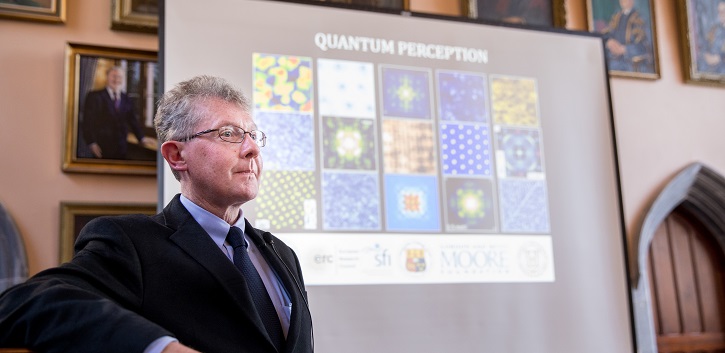Machine Learning used for scientific discovery in Quantum Matter

A breakthrough in Machine Learning has yielded scientific discovery in experimental studies of quantum matter, in research led by an Irish scientist.
The discovery also reveals a new approach through which the process of making scientific discoveries may be rapidly accelerated.
Over two years, University College Cork (UCC) & Oxford University Professor of Physics, Séamus Davis, worked with a team of international physicists and computer scientists to deploy Machine Learning for the first time in the field of quantum physics. Their world-leading research is revealed in Nature today.
Research led by an Irish scientist has revealed a scientific discovery ‘hiding in plain sight’. #Quantum #MachineLearning @UCC https://t.co/KZbiddqI56
— SiliconRepublic (@siliconrepublic) June 27, 2019
Breakthrough solves the puzzle of how electrons behave at atomic level
For the last 100 years materials such as gold and silicon have been conduits to the force which has powered civilisation: electronics. And in all such conventional materials, the behaviour of electrons is simple: they largely ignore each other. However, future electronics designed for quantum technologies requires the development of new quantum materials. In quantum materials, e.g. high temperature superconductors, electrons interact so strongly and behave so strangely that, until now, they have defied explanation.
But now, through machine learning, scientists made a significant breakthrough in understanding. Based on a suite of 80 artificial neural networks (ANN) that they had designed and trained to recognize different forms of electronic matter, machine learning has discovered a new state called a Vestigial Nematic State (VNS).
‘In this innovative collaboration with Professors Eun-Ah Kim (Cornell) and E. Kathami (San Jose State), we fed an archive of electronic quantum matter images gathered over about 20 years, into these artificial neural networks. To my amazement, it actually worked! The Vestigial Nematic State had been predicted by theorists to exist for strongly interacting electrons in a disordered environment, but there was no experimental evidence. It was thrilling to see how the new machine learning technique discovered it hiding in plain sight’ commented Professor Davis.
Vast amount of data requires new ways of discovery
One of the profound difficulties in the field is that, in recent years, experimental data sets from quantum materials research have become vast. This is due to modern automation of experimental techniques. So much data is accumulating that it far exceeds what can be examined by human researchers. Radically new methods are therefore required to advance discovery in this pioneering field of physics.
By fusing machine learning with quantum matter visualisation, the scientists demonstrated how to deal efficiently, accurately and successfully with extensive electronic image archives. They believe that this new approach will accelerate quantum materials advances, especially in the area of high temperature superconductivity, in the quest for room temperature quantum computers.
Professor Séamus Davis led this international research team which included theoretical physicists led by Prof. Eun-Ah Kim (Cornell University), and computer scientists led by Prof. E. Kathami (San Jose State University)
